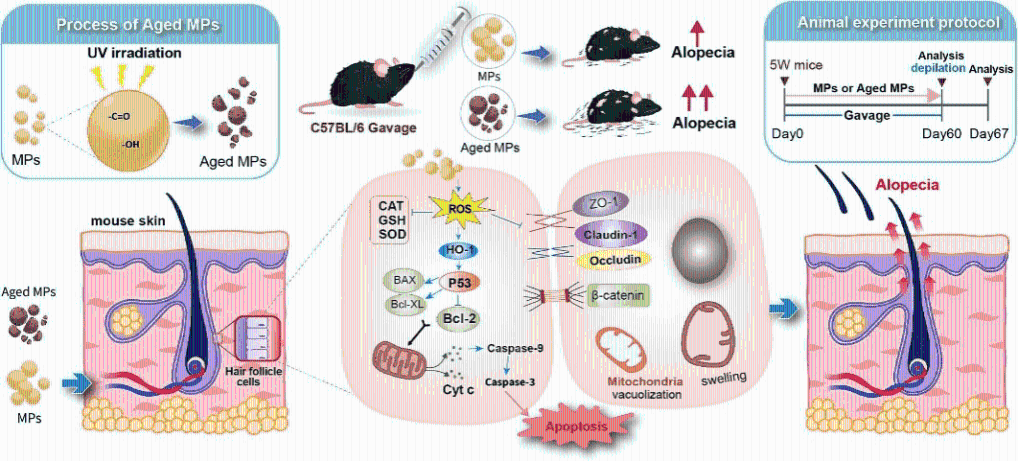Hair loss is a difficult problem for many people. In addition to well-known causes such as heredity, excessive mental stress, and late nights, a study by Associate Researcher Wei-Wei Chu of the Department of Plastic Surgery and Burns at the First Affiliated Hospital of China's Bengbu Medical University suggests that microplastics are also a cause of hair loss. The results of the study, conducted by Chu Weiwei in collaboration with Prof. Wang Xusheng's team at Sun Yat-sen University, were recently published online in the internationally recognized journal Environment International.
The study elucidates a new mechanism for the onset of hair loss. Polystyrene microplastics are particularly prevalent in waters and are susceptible to direct absorption by humans and animals. The researchers observed that ultraviolet radiation caused aging of polystyrene microplastics, increasing their surface roughness and oxygen group content. Animal experiments demonstrated that feeding polystyrene, both raw and aged, caused skin and hair follicle damage in mice, leading to the development of diffuse alopecia.
"The specific mechanism is due to the fact that polystyrene enhances oxidative stress and inhibits the activity of antioxidant-related proteins, leading to impaired intercellular tight junctions within the hair follicle, an increase in the number of hairs lost and a delay in the long term of hair growth." Chu Weiwei said that if normal skin is regarded as a moist and nutritious piece of land, and hair as a plant, polystyrene causes the land to dry out and crack and lose its stickiness, with the result that the plant is unable to take root.

"Of particular note, senescent polystyrene induces higher levels of oxidative stress, exacerbating impaired tight junctions within the hair follicle. In other words, the longer polystyrene exists in nature, the more pronounced the effect." Chu Weiwei said. Against the backdrop of the serious situation of hair loss in the global population, which is becoming younger and more prevalent, the study reveals a new causative factor leading to the hair loss problem and provides a target for intervention and treatment of microplastic pollution-induced hair loss.

